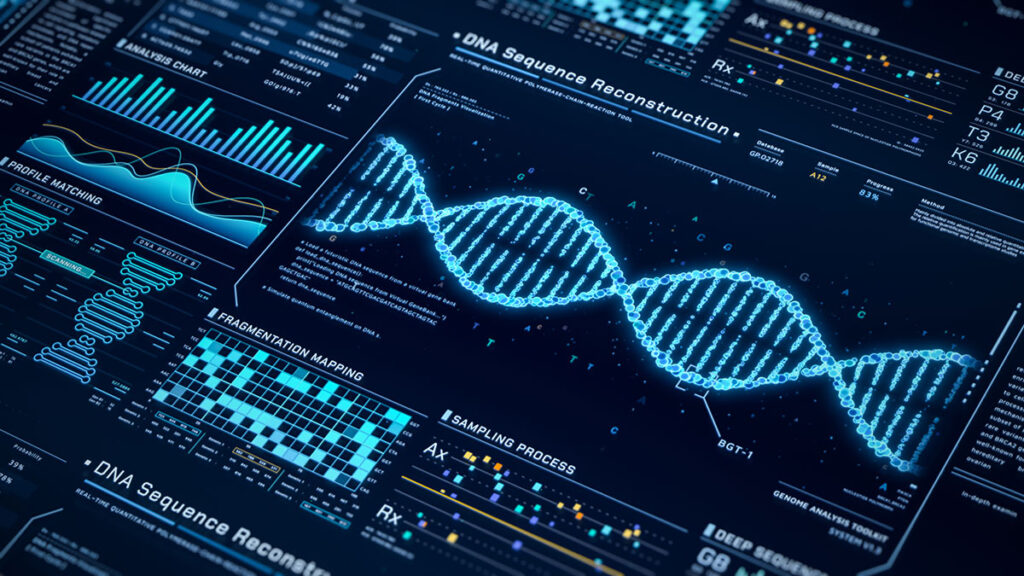Artificial intelligence (AI) is rapidly transforming protein engineering—unlocking possibilities for life-saving therapies and industrial biotechnology. But alongside these advances lies a growing policy challenge: existing biosecurity safeguards for synthetic DNA ordering may be outpaced by generative protein design tools.
A new study published in Science warns that current screening practices at DNA synthesis providers—largely reliant on sequence similarity to known biological threats—are increasingly inadequate. The authors highlight the urgent need for function-based, internationally harmonized screening standards to prevent misuse or accidental creation of hazardous synthetic proteins.
The Emerging Gap in Biosecurity Screening
Current industry-standard biosecurity measures rely heavily on homology-based algorithms—software that detects risky genetic sequences by comparing them to known “sequences of concern.” This approach has worked well for traditional threats such as natural pathogens and historically known toxins.
However, as the new study demonstrates, generative protein design tools can create entirely novel protein sequences with similar harmful functions but little or no recognizable similarity to known sequences. This means that AI-generated proteins with potentially dangerous properties could pass undetected through conventional synthesis screening software.
The authors emphasize that without rethinking screening approaches, the biotechnology industry may soon face biosecurity blind spots that could be exploited accidentally or deliberately.
A New Approach to Detection
The study proposes a hybrid screening strategy that integrates functional prediction algorithms into the traditional homology-based systems. By moving beyond “best-match” sequence comparison, this method can flag synthetic genes that encode hazardous functions—such as enzymatic activity linked to toxins—even when their sequence signatures appear novel.
This shift represents a substantial advance in predictive biosecurity. The researchers also stress the importance of harmonizing such methods internationally, to avoid gaps across jurisdictions and to maintain a level playing field for DNA synthesis providers.
Expert Perspectives: “Serious, but Manageable with Action”
Reactions from the scientific community underscore both the urgency and the nuance of the findings.
- Prof. Natalio Krasnogor (Newcastle University) highlighted that generative protein design tools pose a “growing biosecurity risk because they have the potential to produce functionally dangerous proteins with little homology to sequences of concern.” He added that while translating these AI-generated sequences into viable toxins remains technically demanding, advances in laboratory capabilities could lower these barriers over time.
- Prof. Francesco Aprile (Imperial College London) praised the paper’s approach as “a practical, timely safeguard” that enhances current DNA synthesis screening and “establishes a solid foundation for continued optimisation.”
- Prof. Daniel McCluskey (University of Hertfordshire) emphasized that the issue is “something to be aware of, but not to be alarmed about,” commending the study’s clear steps for mitigation and drawing parallels to cybersecurity’s layered-defense strategies.
These perspectives reflect a shared view: that the risks posed by generative AI to biosecurity are real but can be proactively managed through targeted policy, improved technology, and sustained vigilance.
Implications for Global Governance and Industry Compliance
The study’s findings carry implications for several policy arenas:
- International Biosecurity Standards: Current voluntary frameworks (e.g., the International Gene Synthesis Consortium screening guidelines) may require revision to incorporate function-based detection, ensuring that no jurisdiction becomes a “screening haven.”
- National Regulations and Export Controls: Policymakers could consider updating controlled-sequence lists and licensing regimes to reflect functional hazards rather than solely sequence homology.
- Industry Adoption and Costs: DNA synthesis providers may need technical and financial support to integrate predictive algorithms without imposing prohibitive costs on legitimate research and development.
- Data Sharing and Privacy: Establishing secure, privacy-preserving channels for sharing flagged sequences between providers and regulators will be essential for effective oversight.
Challenges on the Horizon
While the research marks a significant step forward, it also reveals key areas that remain unresolved. Predicting the “constructability” of synthetic proteins—assessing whether a designed sequence can be feasibly produced at scale—remains a blind spot for current screening tools. Moreover, the adoption of more sophisticated screening algorithms may raise questions about data sharing, intellectual property, and potential computational costs for synthesis providers.
Nevertheless, experts argue that delaying action could be far riskier, as the rapid progress of generative AI tools may soon reduce the technical barriers to producing harmful synthetic proteins.
A Collaborative, Cross-Sector Effort
The study reflects a broad collaboration across industry, academia, government-affiliated laboratories, and the international biosecurity community. Lead authors Bruce J. Wittmann and Eric Horvitz of Microsoft’s Office of the Chief Scientific Officer partnered with scientists from the International Biosecurity and Biosafety Initiative for Science (IBBIS), Battelle, RTX BBN Technologies, Integrated DNA Technologies, Twist Bioscience, Aclid, and the University of Birmingham. Contributors brought expertise spanning computational modeling, biosecurity policy, gene synthesis operations, laboratory biosafety, and functional genomics. This cross-sector team underscores that effective biosecurity solutions for AI-enabled biotechnology will require continued multi-stakeholder cooperation and shared technical standards.
Toward Resilient Biosecurity Architecture
This study signals that biosecurity frameworks must evolve alongside AI-enabled biotechnology. Embedding function-based predictive screening into global synthesis standards could help mitigate emerging risks before they materialize, preserving the dual goals of scientific innovation and public safety.
Policymakers, regulators, and industry leaders now face a pivotal opportunity to modernize oversight systems—aligning incentives for compliance, facilitating cross-border collaboration, and sustaining vigilance as technological capabilities advance.
Wittmann BJ, Alexanian T, Bartling C, et al. Strengthening nucleic acid biosecurity screening against generative protein design tools. Science. 2 October 2025.


